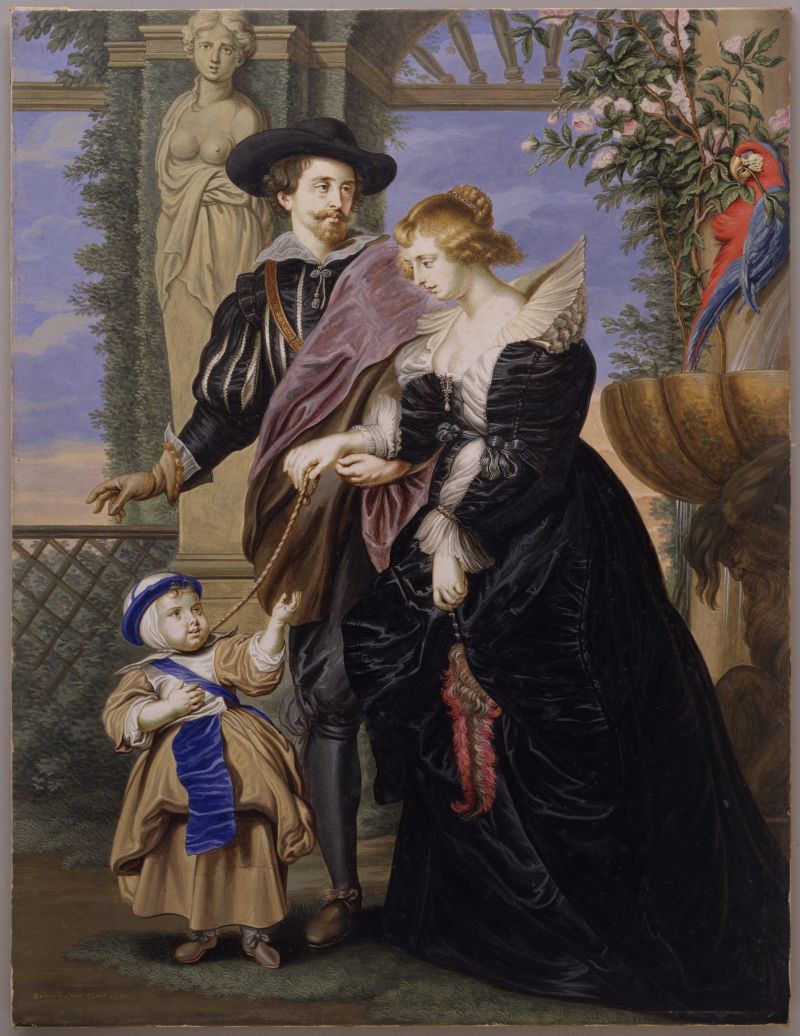In February 1737 the auctioneer Christopher Cock held an auction in his Great Room in Covent Garden. The catalogue announced that it contained ‘the entire and elaborate works of Mr Bernard Lens, limner to their present Majesties; consisting of many excellent limnings, by him copied from the most famous pictures now in royal and other celebrated collections in England.’ Bernard Lens came from a distinguished family of artists. His father, also Bernard, had been a successful engraver, who worked particularly in mezzotint and his grandfather was recorded by George Vertue variously as a ‘Dutch preacher’ and painter. Lens was a highly skilled miniaturist who pioneered the use of ivory as a support in Britain. He was at the heart of the London art world, Vertue listed him as one of the original subscribers to Kneller’s Academy and he achieved considerable reputation as a miniaturist holding Royal Appointments in this capacity under both George I and George II.
Lens has always been famous for the elaborate, highly worked miniaturised copies he makes after celebrated old master paintings. These grand, limmed copies continued a tradition of making cabinet copies that had begun in the early seventeenth century; Charles I had commissioned copies of old master’s from the noted miniaturist Peter Oliver. We know that Lens was acutely aware of the heritage of limning in Britain, consciously fashioning himself as the heir to Nicholas Hilliard and particularly the great seventeenth-century miniaturist, Samuel Cooper. From 1712 he worked for John Hervey, 1st Earl of Bristol producing a series of copies of portraits of famous painters, completing in 1718 heads of Rubens and Raphael. These were joined by a series of portraits of great ‘British’ painters: John Greenhill, Van Dyck, William Dobson and Samuel Cooper, the latter inscribed by Lens ‘famous performer in minature he having far exceeded all that went before him in England in that way and even equell the most famous Italians insomuch that he was call’d ye Van Dyck in little.’ He also advised collectors on the care of their collections. Notably he worked for Edward Harley, 2nd Earl of Oxford. The simple stained black pear-wood frames he produced to house pieces from the earl's collection are still known today as 'Lens frames'.
A number of spectacular miniatured copies after old master paintings survive in several important collections. Horace Walpole noted of Lens: ‘his excellence was copying works of great masters, particularly Rubens and Vandyck, whose colouring he imitated exactly’ and several of the surviving copies are after works by Flemish painters. Lens copied the portrait of Rubens with his wife and child then in the collection of the Duke and Duchess of Marlborough. Lens copied further examples from the Marlborough collection, including the Victorious Hero Takes Occasion to Conclude Peace, which is after a Rubens and a portrait Charles I mounted after the picture now in the National Gallery, London. A further copy survives at the Victoria & Albert Museum, London showing a landscape after Jan van der Vaart.

Bernard Lens
Rubens, his wife Helena Fourment and their son
Gouache on vellum
Metropolitan Museum of Art, New York
The evidence of the 1737 catalogue shows that Lens’s interest in copying was not purely commercial. All his surviving miniature copies are listed in the Cock sale, where we learn, for example, that the van der Vaart belonged to James Gibbs the architect, along with a fascinating group of copies of old masters from some of the most notable collections in Britain. This discovery also corroborates George Vertue’s observation that Lens’s pupil, Catherina da Costa: ‘learned to limne of Bernard Lens for many years. She having begun about 1712 continued to 1730 - in time she Coppyd many pictures & limnings mostly all the remarkable of Faime in England painted by Rubens Vandyck & other masters, which Mr Lens her instructor had coppyd.’
One of the reasons for publishing this short notice is that we have one of Lens’s magnificent copies in our latest show: ‘The Spirt and Force of Art: Drawing in Britain 1600-1750’. The limning was made by Bernard Lens III in 1719 after a celebrated painting by Poussin, then in the collection of the great collector James Brydges, 1st Duke of Chandos. Executed in gouache on vellum and housed in its original ‘Lens’ frame, this work points to Lens’s fascination with the heritage of miniature painting in Britain and to the enduring appeal of finely worked miniaturised copies of celebrated old masters for British collectors.
